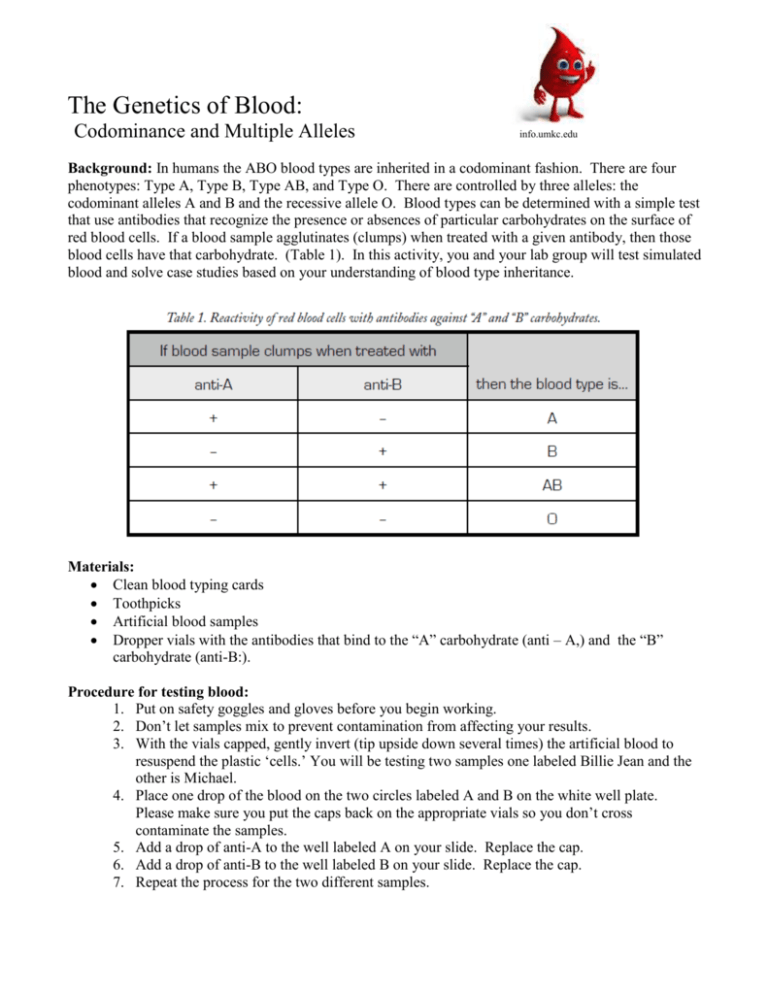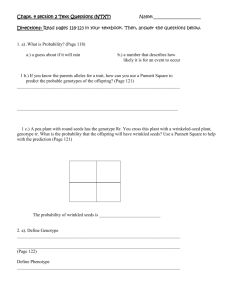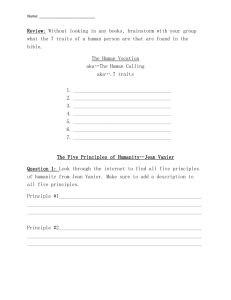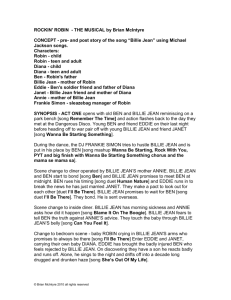The Genetics of Codominance
advertisement

The Genetics of Blood: Codominance and Multiple Alleles info.umkc.edu Background: In humans the ABO blood types are inherited in a codominant fashion. There are four phenotypes: Type A, Type B, Type AB, and Type O. There are controlled by three alleles: the codominant alleles A and B and the recessive allele O. Blood types can be determined with a simple test that use antibodies that recognize the presence or absences of particular carbohydrates on the surface of red blood cells. If a blood sample agglutinates (clumps) when treated with a given antibody, then those blood cells have that carbohydrate. (Table 1). In this activity, you and your lab group will test simulated blood and solve case studies based on your understanding of blood type inheritance. Materials: Clean blood typing cards Toothpicks Artificial blood samples Dropper vials with the antibodies that bind to the “A” carbohydrate (anti – A,) and the “B” carbohydrate (anti-B:). Procedure for testing blood: 1. Put on safety goggles and gloves before you begin working. 2. Don’t let samples mix to prevent contamination from affecting your results. 3. With the vials capped, gently invert (tip upside down several times) the artificial blood to resuspend the plastic ‘cells.’ You will be testing two samples one labeled Billie Jean and the other is Michael. 4. Place one drop of the blood on the two circles labeled A and B on the white well plate. Please make sure you put the caps back on the appropriate vials so you don’t cross contaminate the samples. 5. Add a drop of anti-A to the well labeled A on your slide. Replace the cap. 6. Add a drop of anti-B to the well labeled B on your slide. Replace the cap. 7. Repeat the process for the two different samples. 8. Use the toothpicks to stir the reactions for about 30 seconds each. Use a clean toothpick for each reaction (you can use both sides if you flip it around). Allow at least 30 seconds to 60 seconds for the reaction to occur. You may need to use a hand lens or dissecting scope to observe the agglutination. 9. Carefully examine each slide for results. a. In each well, a thin film should appear on the surface of the liquid. b. If the film remains uniform in appearance, no reaction or agglutination has occurred. This is a negative (-) result. c. If the film appears granular (chunky), a reaction has occurred. This is a positive result. Scenario: Billie Jean has blood type A and gives birth to a child who has blood type O. She claims that Michael is the father but he denies this accusation. First identify the possible genotypes for Billie Jean and write them in the space below. Next determine the possible genotypes for the father of the child and write them in the space below. Use the materials provided to confirm the blood type of Billie Jean and practice with the test materials. Next test the sample from Michael to determine his blood type. Based on Michael’s blood type determine if it is possible for him to be the father. Billie Jean’s possible genotypes _________________________________ Father’s possible genotypes ____________________________________ Michael’s phenotype (blood type) _____________________________ 1. Is it possible for Michael to be the father? (Explain your answer using phenotype and genotype information) 2. Type O blood is considered the universal donor. What does this designation mean in terms of antigens and antibodies? 3. Type AB blood is an example of codominance. Explain why the genotype for Type O blood is written as ii. Analysis: Sample Billie Jean #1 Michael #2 Anti – A Anti – B Blood type











